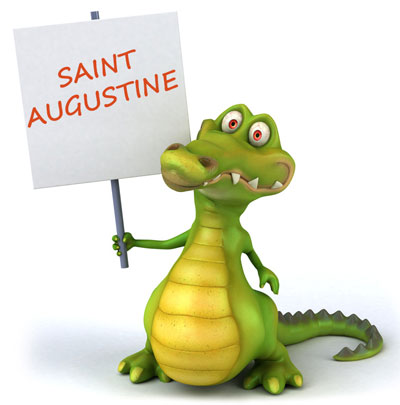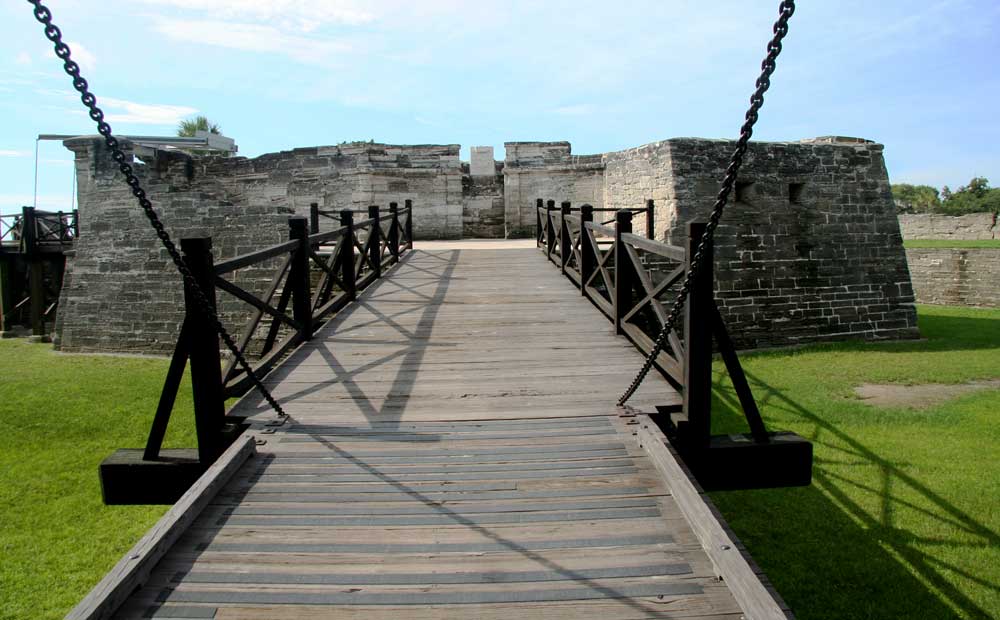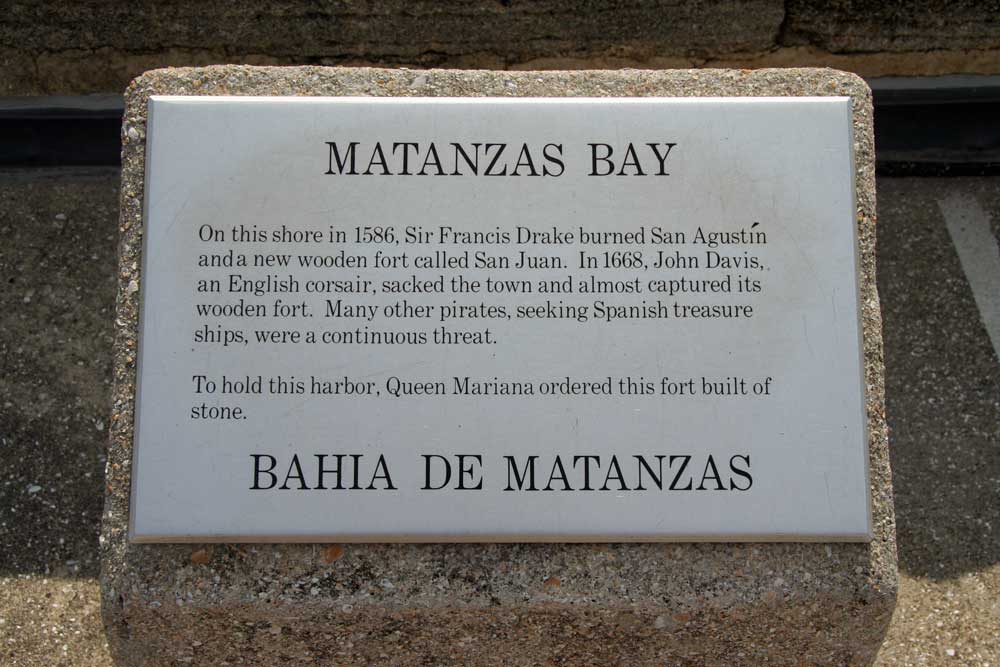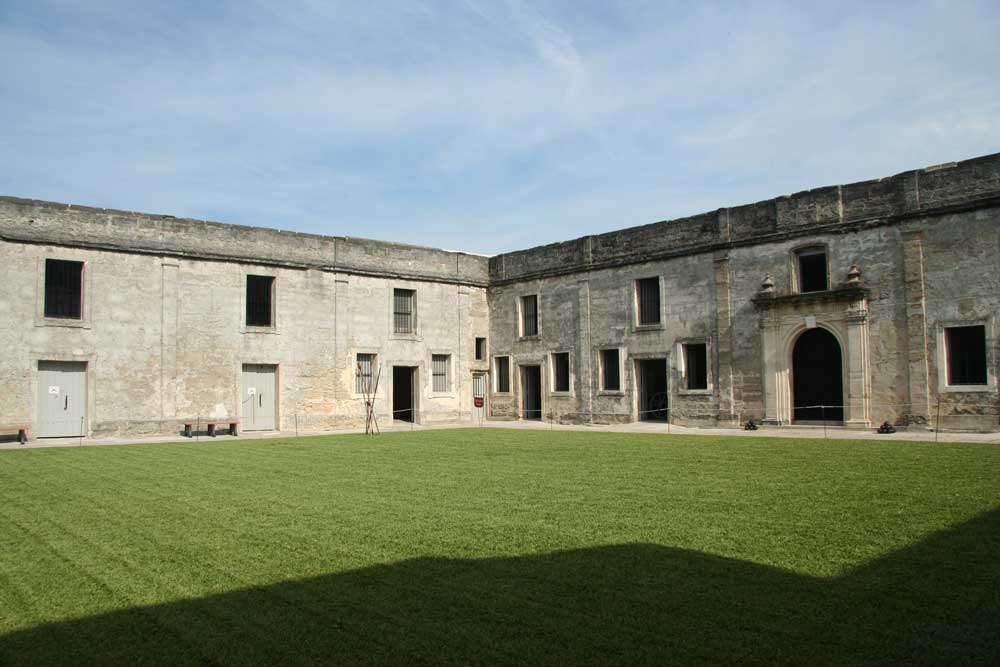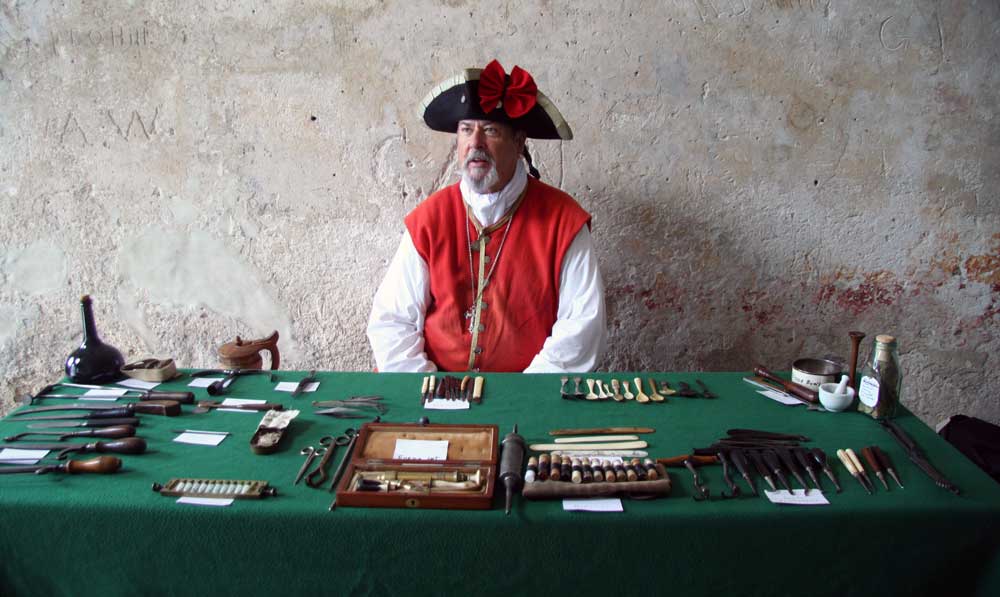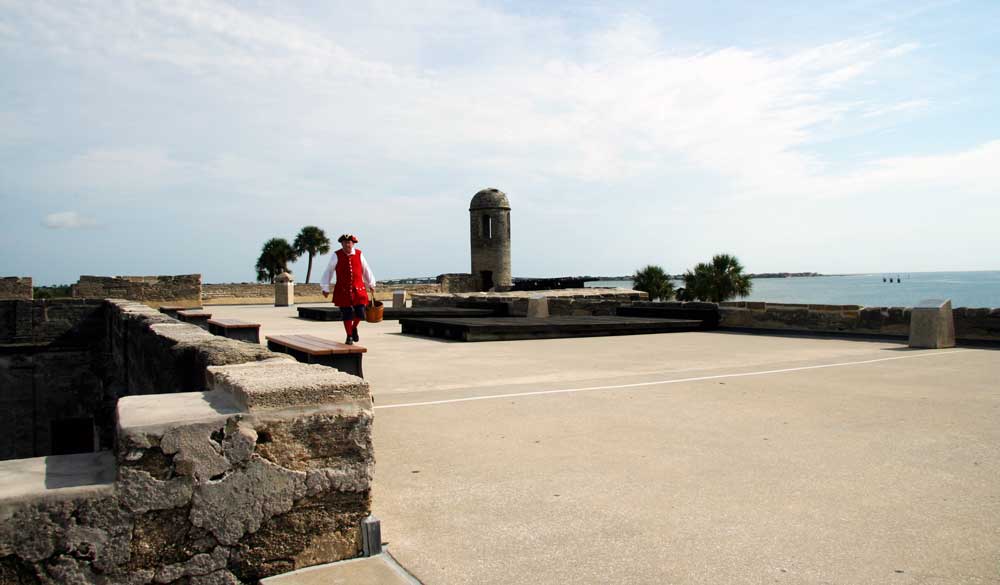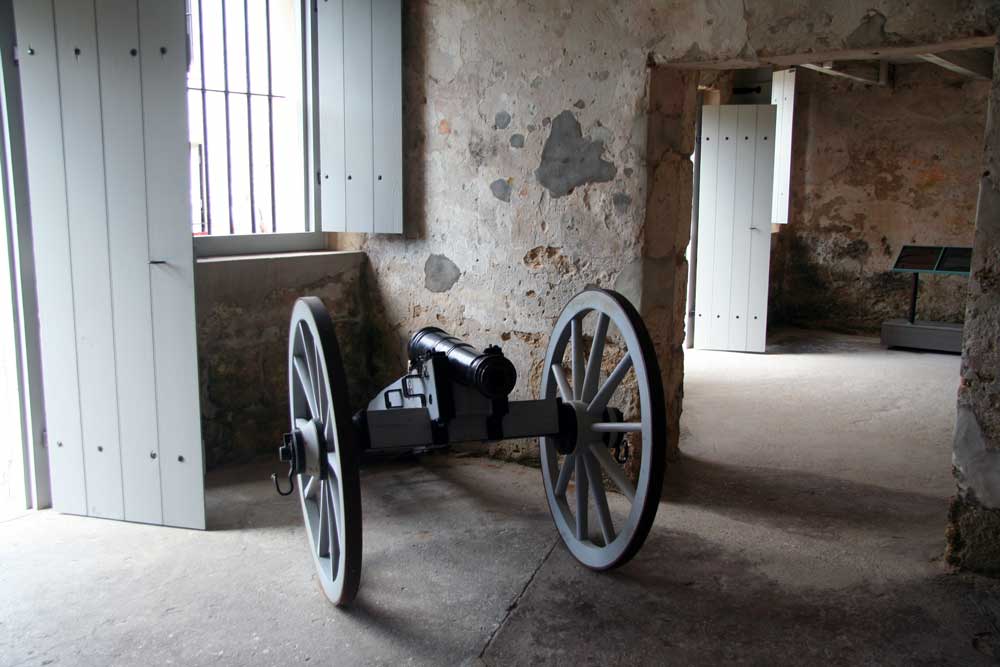Discover history in the Castillo de San Marcos
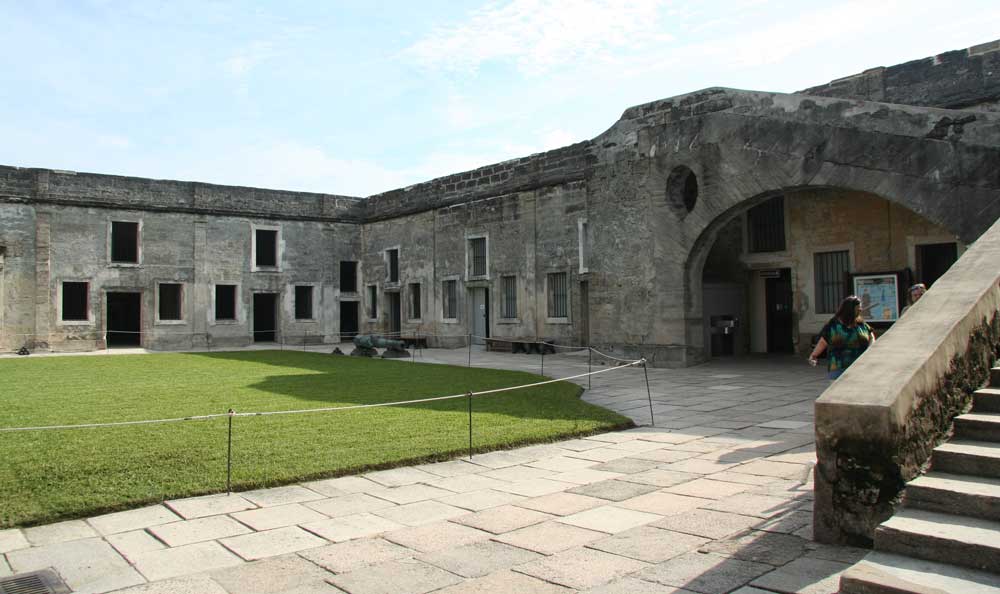
The Castillo de San Marcos is a fort built by the Spanish, whose construction was decided after an attack in 1668 and started in 1672. Cuban workers built the citadel from shell limestone over a period of 23 years. Today, the local rangers wear uniforms from the Spanish colonial era to envelop visitors in a medieval atmosphere.
Every half hour there is a cannon fire in the Castillo de San Marcos if there are enough visitors. There are also various other demonstrations. The rangers are also happy to answer tourists’ questions, which they are obviously happy to do.
Siege by the British
Shortly after its completion in 1702, the British, under the command of Governor James Moore, laid siege to the fort from the town of Charleston, founded in 1670 in the British colony of South Carolina. During the two-month siege, 1,200 inhabitants of the town lived in the fort together with 300 soldiers stationed there. A Spanish fleet from Havana was able to end the siege.
The British sank their ships to prevent them from falling into Spanish hands. They then set fire to the city, which burned to the ground. The losers fled overland to Carolina. Pedro Ruiz de Olano rebuilt the fort in 1738. He reinforced the walls and replaced the wooden ceilings with stone vaulted ceilings so that heavier cannons could be used in the fort for future defense.
Siege by the British for the 2nd time
In 1739, Great Britain and Spain were engaged in a colonial war and the British besieged the fort once again under the leadership of General James Oglethorpe. The Spanish governor Manuel de Montiano led the defense of the city. Oglethorpe from the new British colony of Georgia had already conquered Fort San Diego, Fort Picolotta and Fort Mose. He fired incessantly on the town and fort, blocking important supply routes by sea and hoping that the governor would quickly give up in this way.
However, the Spanish managed to partially break through the blockades and ultimately the fort withstood the heavy bombardment. After 38 days, the British withdrew without having achieved anything. When Spain ceded Florida to the British under the Treaty of Paris in 1763, the fort became British property. In return, Spain received Havana and Manila.
At the beginning of the American independence movement, Saint Augustine was declared the capital of East Florida by the British and rebuilt. The fort now became an important base for military operations in the south of North America, even if it only played a minor role in the War of Independence. In 1779, Spain declared war on Great Britain, after which Florida was returned to Spain under the Peace of Paris in 1783. The Spanish soldiers returned to the Castillo in 1784.
Spain hands over Castillo de San Marcos to Florida
When the Spaniards took possession of the fort again, many of their compatriots had left the country because Florida had become British property. Border problems arose with the developing United States. The fort regained its original name and was further strengthened to consolidate Spain’s presence in the region. Ultimately, however, Spain ceded Florida to the United States in 1821.
In 1861, Florida seceded from the United States and the Union troops withdrew except for one man. A short time later, the Confederates took over the fort. All the weapons were moved to other installations and the fort itself was defenseless.
In 1862, the fort was recaptured by the Union when they sailed into the bay with the USS Wabash and found the fort and the town defenceless. They then converted the fort into a prison. Indians and deserters were imprisoned. Around 1900, the Castillo de San Marcos lost its function and was converted into a national monument in 1924. It has been under the control of the National Park Service since 1933. It was added to the National Register of Historic Places in 1966. The fort is administered together with Fort Matanzas National Monument.
Jon Burpee from Castillo de San Marcos about the fort
Information & Route planner Castillo de San Marcos
| Opening hours | daily 9 a.m. – 5 p.m. |
| Admission | Adults $ 15 Children free of charge |
| barrier-free | ✅ Limited |
| Children | ✅ Guided tours suitable for children |
| Parking | ✅ chargeable |

